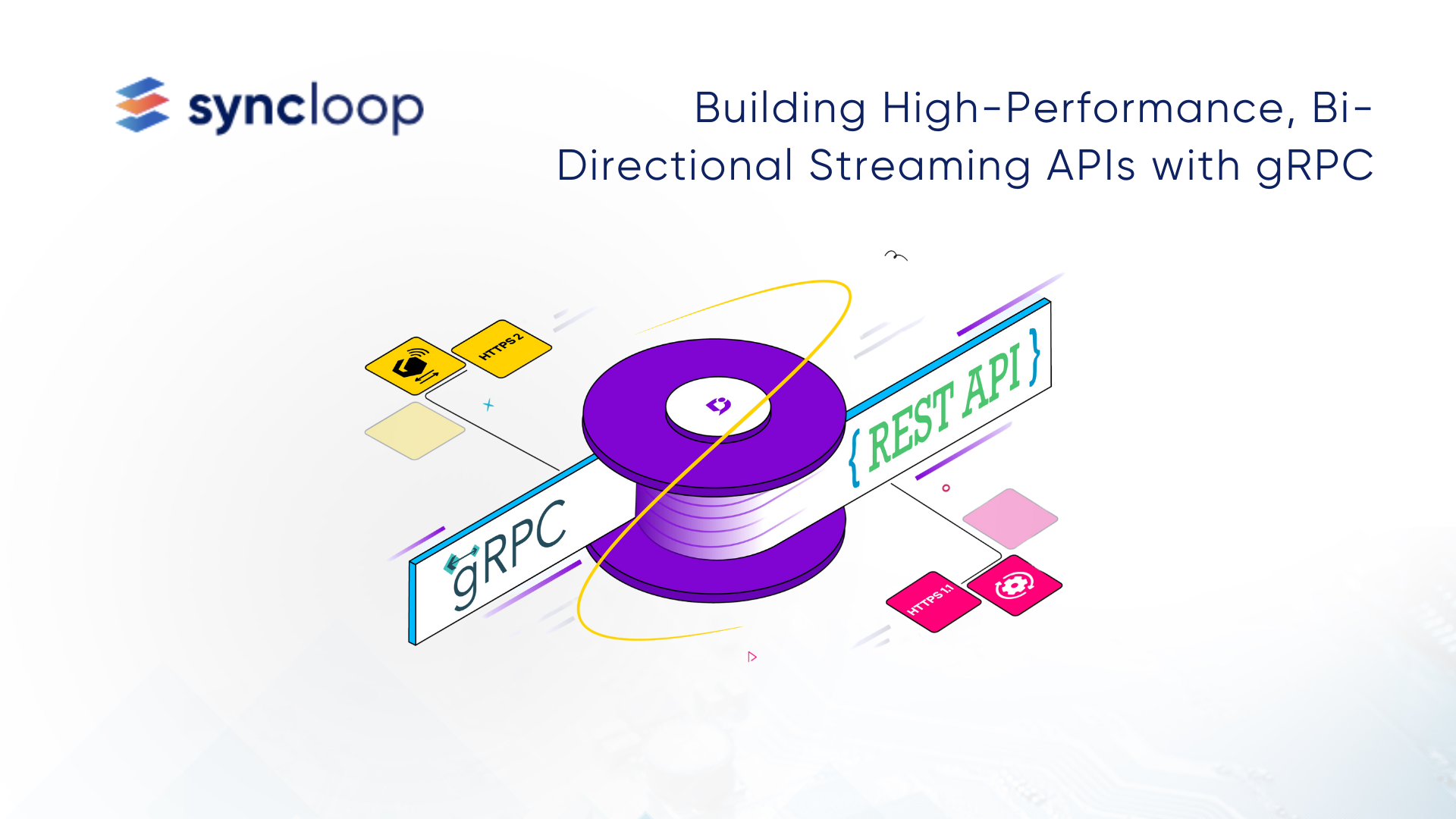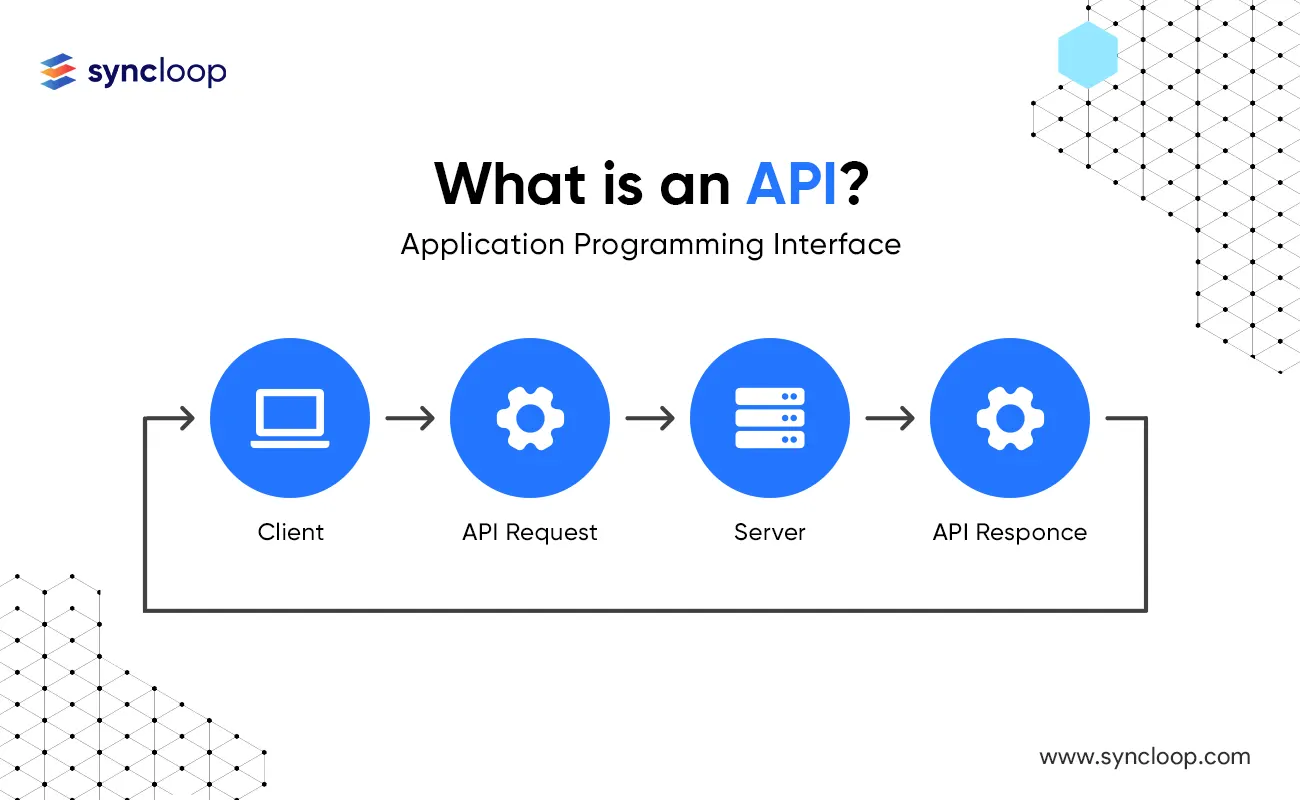Performance and Efficiency: Building High-Performance, Bi-Directional Streaming APIs with gRPC
Posted by: Deepak | May 14, 2024

Categories: Microservices Architecture, Digital Transformation, gRPC
In today's era of real-time data exchange and interactive applications, APIs (Application Programming Interfaces) play a critical role. But for scenarios demanding high-performance and bi-directional data flow, traditional REST APIs can introduce latency and overhead. Enter gRPC (gRPC Remote Procedure Calls), a powerful technology that empowers you to create high-performance, bi-directional streaming APIs. This blog delves into the world of gRPC, exploring its core functionalities, benefits, and practical applications for building efficient and scalable APIs.
Why gRPC for Streaming APIs?
Here's what sets gRPC apart for building streaming APIs:
- High Performance: gRPC leverages HTTP/2, a protocol designed for efficient data transfer, minimizing latency and maximizing throughput compared to traditional REST APIs.
- Bi-Directional Streaming: gRPC supports both client-to-server and server-to-client streaming, enabling real-time data exchange and interactive experiences.
- Protocol Buffers: gRPC uses Protocol Buffers, a language-neutral mechanism for defining data structures. This ensures efficient data serialization and deserialization across different programming languages.
- Strong Typing: Protocol Buffers enforce strong data typing, leading to improved code maintainability and reduced runtime errors.
Statistics highlight the growing adoption of gRPC for streaming APIs. A 2023 survey by Datadog reveals that 42% of developers are actively using gRPC for building microservices and real-time applications, signifying its increasing popularity.
Core Concepts of gRPC Streaming APIs
Understanding these core concepts is essential for building effective gRPC streaming APIs:
- RPC (Remote Procedure Calls): gRPC extends the RPC paradigm for efficient communication between client and server applications.
- Unary vs. Streaming RPC: Unary RPC involves a single request-response exchange, while streaming RPC allows for continuous data flow in one or both directions.
- Server-Streaming RPC: The server sends a stream of data to the client in response to a single client request. (e.g., real-time stock price updates)
- Client-Streaming RPC: The client sends a stream of data to the server in a single request. (e.g., uploading a large file)
- Bi-directional Streaming RPC: Both client and server can send and receive data streams simultaneously. (e.g., collaborative editing applications)
- Protocol Buffers: Define data structures and message formats used for communication between client and server.
Industry Use Cases for gRPC Streaming APIs
gRPC empowers diverse industries to build high-performance streaming applications:
- FinTech: Real-time fraud detection, market data feeds, and high-frequency trading systems can leverage gRPC for low-latency data exchange.
- IoT (Internet of Things): gRPC facilitates efficient communication between IoT devices and applications for real-time data collection and monitoring.
- Gaming: gRPC enables real-time multiplayer game interactions, synchronized state updates, and smooth player experiences.
- Live Streaming: gRPC can optimize video and audio streaming platforms, ensuring low latency and high-quality user experiences.
These examples showcase the versatility of gRPC for building real-time and data-intensive applications across different industries.
Integration Process and Technical Details
Here's a simplified overview of the gRPC integration process:
- Define Protocol Buffers: Create .proto files to define data structures and messages for your API functionalities.
- Generate Code: Use language-specific tools (e.g., protoc) to generate client and server code stubs based on your Protocol Buffer definitions.
- Implement Server Logic: Develop server-side logic to handle incoming gRPC requests and generate data streams.
- Develop Client Application: Write client-side code using the generated gRPC stubs to interact with the server and handle received data streams.
Benefits of gRPC for Different Teams:
Developers: gRPC simplifies API development with strong typing, efficient data handling, and robust tooling support.
DevOps: gRPC promotes efficient resource utilization and reduces network overhead, leading to improved application performance and scalability.
Business Users: Real-time data access and efficient communication empower businesses to make data-driven decisions and deliver enhanced user experiences.
Latest Tools and Technologies for gRPC Development
The gRPC ecosystem offers a wealth of tools to streamline development and deployment:
- gRPC Libraries: Official gRPC libraries are available for various programming languages like Java, Go, Python, and C++.
- gRPC Frameworks: Frameworks like grpc-java and grpc-python provide additional functionalities for building and managing gRPC applications.
- API Gateways: API gateways like Apigee and Kong can integrate gRPC APIs alongside traditional REST APIs, providing a unified management and security layer.
- Service Mesh Tools: Service mesh tools like Istio and Linkerd can be used for advanced routing, traffic management, and observability within a gRPC microservices architecture.
Disadvantages and Considerations for gRPC
While gRPC offers significant benefits, there are also some considerations to keep in mind:
- Learning Curve: gRPC introduces new concepts like Protocol Buffers and RPC semantics, requiring developers to invest time in learning these technologies.
- Limited Ecosystem Support: Compared to REST APIs, gRPC has a smaller ecosystem of tools and libraries, although this is rapidly evolving.
- Debugging Challenges: Debugging complex bi-directional streaming interactions can be more challenging compared to traditional request-response APIs.
How Syncloop can Facilitate gRPC API Development
While Syncloop doesn't directly offer native gRPC integration, it can still play a valuable role in the development process for APIs that leverage gRPC on the backend:
- API Design and Documentation: Syncloop's visual API design tools can be used to define and document your gRPC API functionalities, even though the actual implementation will involve Protocol Buffers and gRPC libraries.
- API Mocking and Testing: Syncloop's mocking capabilities can be used to create mock gRPC APIs for testing purposes, allowing developers to simulate server responses and test client-side interactions before connecting to the real server.
- API Gateway Integration: If you plan to integrate your gRPC API with an API gateway, Syncloop can potentially streamline the process by managing API authentication, authorization, and other gateway functionalities, simplifying overall API management.
Remember, Syncloop's core strength lies in streamlining API design, documentation, and management. While it doesn't directly handle gRPC implementation, it can still be a valuable asset in the overall API development workflow when combined with gRPC for the backend functionality.
Conclusion
gRPC has emerged as a powerful technology for building high-performance, bi-directional streaming APIs. Understanding its core functionalities, benefits, and use cases empowers you to leverage its potential for creating real-time and data-intensive applications. By combining gRPC with the latest tools and technologies, you can streamline development, ensure efficient communication, and unlock new possibilities for your digital initiatives. As the demand for real-time data exchange grows, mastering gRPC will position you to deliver performant and scalable APIs that meet the evolving needs of modern applications.
Back to Blogs

